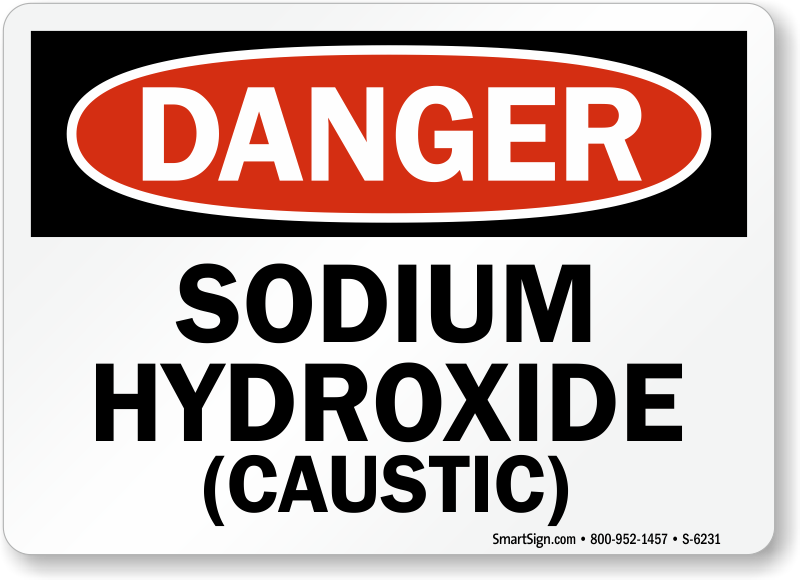
Image source: https://images.mysafetysign.com/img/lg/S/sodium-hydroxide-osha-danger-sign-s-6231.png
This compound is found in many manufacturing plants. It is used in the following industrial purposes: manufacture of soaps, detergents and cleaning agents; processing of cotton and production of rayon and cellophane; processing of petroleum and natural gas; manufacture of pulp and paper; and more than a few different chemical processing like pH control and acid neutralization. This chemical is also found in textile processing, vegetable oil refining, water treatment, manufacture of glass, preparation of adhesives, and stabilization of sodium hypochlorite. It is used in the processing of aluminum and degreasing of metals.
This compound is either used in industries as a pure solid substance or in solutions with water at varying concentrations. It can even be found with impurities like sodium chloride, sodium carbonate, and metals like iron and nickel.
Sodium hydroxide is one of the most dangerous chemicals. It is one of the strongest alkaline, known as caustic soda or lye. It is white, odorless and non-volatile in aqueous solutions. It is not readily flammable. However, it is a highly reactive substance. It forms an exothermic solution with water, evolving heat which will even ignite combustible materials nearby. Its reaction with different metals yields hydrogen gas which ignites in the presence of oxygen. Moreover, this substance is extremely corrosive.
This chemical is known in chemistry to be one of the most dangerous substances that needs to be handled with extreme caution.
These, then again, are results of preliminary and acute exposures. Chronic exposure is one thing that concerns most workers in industrial plants where sodium hydroxide is introduced and utilized. Continual skin contact causes the skin to become dry, cracked, and inflamed. Chronic respiratory exposure can even cause serious obstruction in the airway.
This compound is very corrosive that it shouldn't ever come in contact with any part of the body. During skin exposure, the substance causes severe burning, ulceration and scarring. One of the dangers of skin exposure is that the chemical tends to destroy deeper layers of the skin until it is washed off. The extent of injury depends on the length and amount of exposure.
Another thing which needs to be guarded is the possibility of eye contact because the chemical can penetrate deep into the eyes. One of the most obvious symptoms of eye injury due to exposure is damage on the cornea accompanied by clouding and loss of normal vision. This could progress to eye disorders like glaucoma and cataract. The ulceration and clouding in the eye can even continue resulting to everlasting blindness.
Accidental ingestion of the alkaline can even result to even more serious conditions. The substance is likely to corrode something in its path. Thus, severe burns in the mouth, throat, esophageal lining, and gastric lining can even happen. This could be accompanied by vomiting and loose bowel movement. In severe cases hemorrhage and perforation can even occur, which ends in death.
A research was conducted to determine whether the inorganic base is guilty for melanoma. Individuals who were commonly uncovered to it were called in for the study. There is a speculation that the alkaline causes melanoma of the esophagus to individuals who have accidentally swallowed it. However, the melanoma does not develop until more than ten years from exposure. The same melanoma tissue growth has been noticed in areas of the skin that suffered previous burns. But experts believe that the cancerous growths have been due to the wear and tear to the tissue and formation of scar and not instantly caused by chemical exposure.